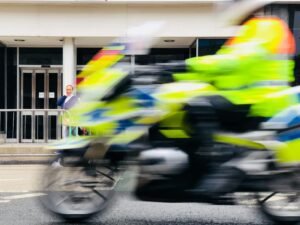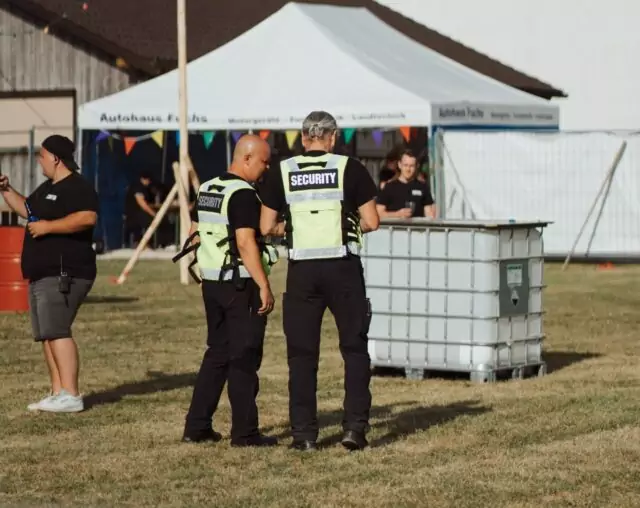Legal services
Martyn’s Law
On April 3rd 2025, the much-anticipated Terrorism (Protection of Premises) Bill, commonly called Martyn’s Law, received Royal Assent, making it law in the UK.
Here, Licensing Solicitors Andy Grimsey and Joe Harvey explain what this new law means to you and the sites you manage.

What is Martyn’s Law?
The Terrorism (Protection of Premises) Act, commonly known as Martyn’s Law after Martyn Hett, one of the 22 victims of the 2017 Manchester Arena bombing, requires those responsible for certain premises and events to consider the terrorist risk and how they would respond to an attack.
In addition, certain larger premises and events must also take steps to reduce the vulnerability of premises to terrorist attacks.
What type of premises are affected?
The Act applies to publicly accessible buildings or land (not private premises or private parts of premises). A building will often have land associated with it, for example a pub with a beer garden, or a hotel with outside grounds used for dining and events. These are included as part of the premises.
The premises or land must fall within one of the Schedule 1 uses. Schedule 1 lists a variety of uses, including:
- the retail sale of goods
- the sale of food and drink for consumption on the premises
- entertainment and leisure activities
- sports grounds
- hotels
- holiday parks
- visitor attractions and so on.
- Outside the hospitality sector uses include healthcare, places of worship, childcare and educational establishments.
So, as you can see, Martyn’s Law covers pretty much every type of hospitality premises imaginable.
Legal services
What size of premises are included?
The ‘capacity’ of each premises matters as there is a tiered approach to obligations
This new legislation covers all premises in the UK that expect 200 or more people to be on site at any one time. However, the ‘capacity’ of each premises matters as there is a tiered approach to obligations, as below:
- Standard Tier: Premises that are reasonably expected to have 200 to 799 individuals on the premises from time to time fall within the standard tier. They would be required to carry out Public Protection Procedures.
- Enhanced Tier: Premises that are reasonably expected to have 800 individuals or more will fall in the enhanced tier. They would be required to carry out Public Protection Measures.
- Qualifying Events: Events that are reasonably expected to have 800 or more individuals in attendance at the same time at some point during the event will also be subject to enhanced tier requirements, meaning they would be required to carry out Public Protection Measures.
Premises with 199 or fewer people expected on the premises at any one time, or those whose business uses are not listed on Schedule 1, are outside the scope of Martyn’s Law.
However, and this is a very important point, the above Tiers are based on the Government’s current Terrorism Threat Level, which at the time of is Level 3: “Substantial, a threat is likely.”
The Act gives the ability to the Secretary of State to reduce these Tier number thresholds to 100 and 500 respectively.
Another important point for premises that fall into Enhanced Tier and Qualifying Events is that the Public Protection Procedures in the Standard Tier are still required. It is not one or the other.
This sums up how the Tiers work:
Standard Tier: 200 – 799 |
Enhanced Tier: 800 + |
| Premises that are reasonably expected to have 200 to 799 individuals on the premises from time-to-time are required to carry out Public Protection Procedures.
This capacity can fall to 100 should the Secretary of State so decide.
|
Premises that are reasonably expected to have 800 individuals or more on the premises from time-to-time will fall in the Enhanced Tier.
This capacity can fall to 500 should the Secretary of State so decide. Operators in this Tier are required to carry out Public Protection Procedures AND Public Protection Measures.
|
Qualifying Events: 800 + |
No Tier: 199 or below and/or premises uses are not listed on Schedule 1 |
| Events that are reasonably expected to have 800 individuals or more will fall into the Enhanced Tier.
This capacity can fall to 500 should the Secretary of State so decide. Operators in this Tier are required to carry out Public Protection Procedures AND Public Protection Measures. |
No compliance required under the Act. |
How to assess whether your premises are in the scope of Martyn’s Law?
Any reasonable method of assessing this number can be used, so for example:
- Safe occupancy for fire safety purposes
- Historic attendance data
- Fixed seating and/or standing numbers
- Tickets and pre-registration limit
- Restrictions imposed by a premises licence or other authorisation
- Other means of assessing, for example using records of transactions.
What is involved in the Standard Tier?
Standard tier premises are required to put in place simple procedures to reduce the risk of physical harm to individuals who may be present. These would normally include evacuation, invacuation, lock down and communication procedures. The Act does not require physical alterations or the purchase of equipment at standard duty premises. However, people working at the premises must be made aware of the procedures so that they can be ready to put them into practice. These procedures will require review.
What is involved in the Enhanced Tier?
All of the above Standard Tier requirements, plus operators are required to ensure that public protection measures are put in place to reduce the vulnerability of the premises or Qualifying Event to acts of terrorism. These may be implemented through:
- people (e.g. extra training)
- processes (e.g. a bag search policy) or
- or physical measures (e.g. CCTV).
Measures also include monitoring of the premises, controlling the movement of people in and out of the premises, physical safety and security measures (e.g. safety glass or Hostile Vehicle Mitigation) and understanding the sensitivities of information relating to a premises and who should have access to that information, such as floor plans.
Legal services
Martyn’s Law Compliance
Understanding the importance of being compliant with Martyn’s Law
Who is responsible for compliance?
The person responsible in both tiers is the person (an individual or a corporate entity) who has control of the premises in connection with their relevant Schedule 1 use. In other words, the shop owner is responsible for a shop, or the pub landlord for a pub. Responsibility under the Act does not lie with the freehold owner if they have no involvement in the running of the premises for its relevant use. Likewise, for qualifying events, the owner of a field where a festival is held once a year would not be the responsible person, rather the festival organiser for the duration of that festival. If another festival is held at the same site later on in the year then that festival organiser would be the responsible person for that later event.
Reasonably practicable
The Act is intended to be proportionate and the concept of “reasonable practicability” runs throughout. Therefore, those responsible for premises and events are allowed to take into account the nature of their activities, operating environment, and available resources when fulfilling their obligations under the legislation.
Immediate vicinity
Whilst the immediate vicinity of the premises or event is not a factor in deciding whether the premises or event falls within scope (i.e. within the 200 – 799 tier, or 800 and above), the immediate vicinity must be included in the relevant procedures and/or measures undertaken to reduce the risk of harm from or vulnerability to terrorist attack. So a large stadium would have to consider Zone Ex (the external zone which lies immediately beyond the outer perimeter of a sports ground), and a pub might have to take into account the pavement immediately outside.
Who is the regulator
The regulator is the Security Industry Authority (SIA).
And the ‘Responsible Person’ for all affected Tiers must notify the Security Institute Authority (SIA) when relevant premises are Standard or Enhanced Tier. It is the same for Qualifying Events.
What premises are outside scope?
Premises or land which are not used for a Schedule 1 use, or whose reasonable expectation of individuals present could never be more than 199 fall outside the scope of the Act. There are also certain excluded premises, for example the Houses of Parliament.
Compliance
The regulator can issue compliance notices, and in the case of Enhanced Duty premises and Qualifying Events, restriction notices. These notices can limit the numbers at premises or events, the times a premises or event can take place etc. Both types of notice can be appealed to a tribunal. There are obligations on non-parties, for example freeholders, to co-operate to ensure a premises complies with its requirements under the Act.
Penalties
Maximum penalties for Standard Tier premises are £10,000 for a fixed penalty plus £500 per day daily penalty. For Enhanced Tier premises or Qualifying Events these maximums are £18 million or 5% of worldwide turnover, and a £50,000 maximum daily penalty.
Licensing Plans
The Act also contains provisions for the exclusion of sensitive information in licensing plans from licensing authorities’ public registers. These provisions would apply to licensing plans from the date the law came into effect but plans already on licensing registers can be subject to applications for their removal or amendment to ensure that no sensitive information that could be of use to terrorists is publicly available.
How long do I have to organise training to become compliant?
Now Martyn’s Law has Royal Assent it is the law. However, operators are likely to have 18 to 24 months to prepare before the provisions take effect. Sector based guidance is likely to be issued to help operators understand their obligations.
For further information and guidance on Martyn’s Law, please feel free to contact licensing solicitors, Andy Grimsey and Joe Harvey on 0115 953 8500.
Legal services
Stay updated
We will continue to keep you updated with further details as and when they become available.


